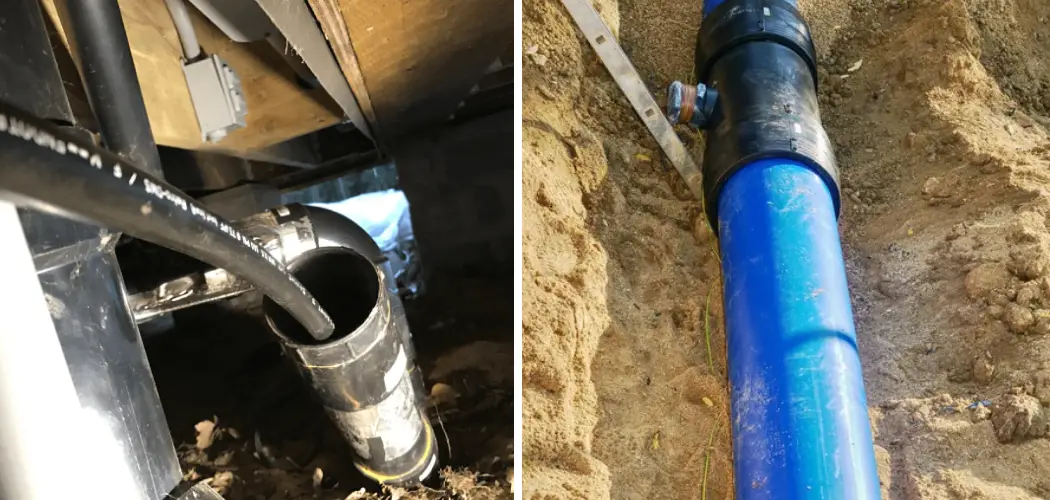As winter’s chill sets in, the risk of shallow water lines freezing becomes a concern for many homeowners. Preventing this issue is crucial to ensure a continuous water supply and avoid costly damage. In this guide, we will explore effective methods for how to keep shallow water line from freezing.
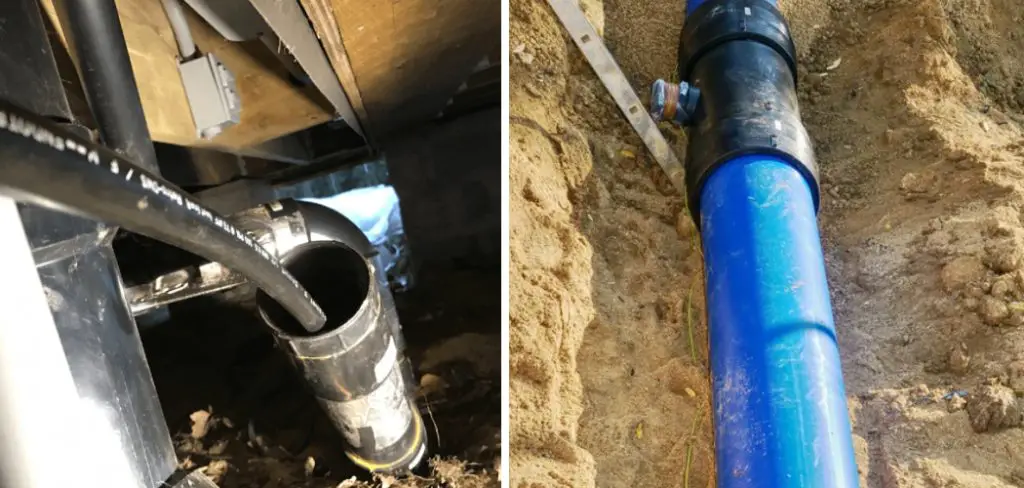
From insulation techniques involving foam board and plastic wrap to backfilling with sand, we will delve into practical steps to safeguard your water lines from the bitter cold.
Whether you’re dealing with shallow buried pipes or a water supply system close to the surface, understanding how to prevent freezing is essential. Join us on this journey to discover the best practices for maintaining a reliable water flow even during the harshest winter conditions. Don’t let freezing temperatures disrupt your water service; learn how to protect your shallow water lines with our expert insights.
The Common Problem of Shallow Water Lines Freezing in Cold Weather
In regions with cold climates, shallow water lines freezing is an unfortunate but common problem that can occur during the winter months. This issue can cause disruptions in daily life and even lead to expensive repairs if not addressed promptly. In this document, we will discuss why shallow water lines freeze and what steps you can take to prevent it from happening.
Possible Causes of Shallow Water Lines Freezing
There are several factors that can contribute to shallow water lines freezing, such as:
- Low Temperatures: When the temperature drops below freezing point, any standing water in your pipes can freeze and cause blockages.
- Poor Insulation: Lack of proper insulation around the pipes can leave them vulnerable to cold temperatures, especially in areas where there is little or no heat source nearby.
- Inadequate Ground Coverage: If the exposed portion of your water line is not deep enough, it can freeze during extreme weather conditions.
The Importance of Preventing Freezing to Maintain Access to Water
When the winter season sets in, many people face the challenge of keeping their shallow water lines from freezing. This can be a daunting task for those living in colder climates, as frozen pipes often lead to restricted or no access to water.
In addition to ensuring basic human needs such as drinking and sanitation purposes are met, functioning water lines also play a crucial role in daily activities such as cooking, cleaning, and other household tasks. Therefore, it is important to take necessary precautions to prevent water lines from freezing.
One of the main reasons why water lines freeze is due to sub-zero temperatures combined with inadequate insulation or exposure to cold air. This can lead to a build-up of ice in the pipes which restricts or completely blocks the flow of water. As a result, homeowners may face costly repairs and damage to their property.
To keep shallow water lines from freezing, there are several measures that can be taken. One effective method is to invest in proper insulation for the pipes. This can include using heat tape or foam pipe sleeves to cover exposed areas of the pipes, as well as insulating crawl spaces or basements where the pipes are located.
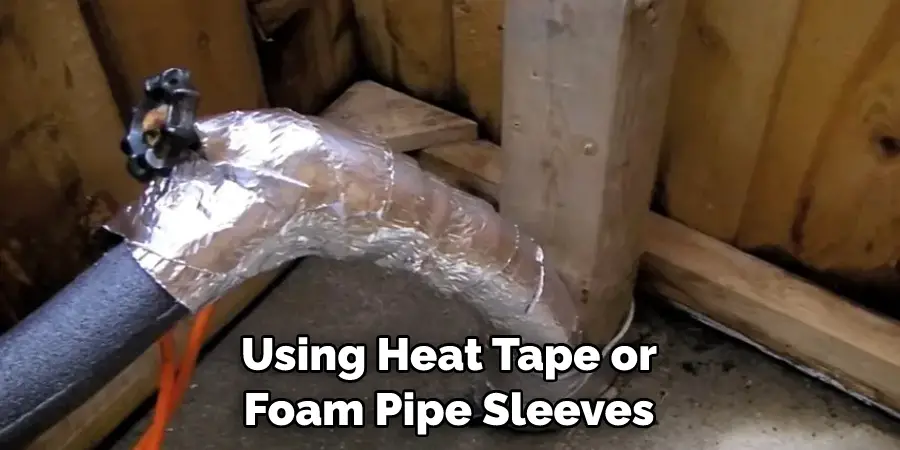
10 Methods How to Keep Shallow Water Line from Freezing
1. Insulate Pipes
Insulating pipes is one of the best ways to prevent shallow water lines from freezing. Insulation helps to reduce heat loss and can help keep the water in the pipes at a higher temperature, making it less likely to freeze. The insulation should be applied to any exposed pipes and should be thick enough to provide adequate protection against the cold temperatures.
2. Install Heat Tape
Heat tape is a type of electrical wiring that is used to keep pipes from freezing. It works by providing an electrical current that runs through the pipe, which creates heat and keeps the water inside from freezing. Heat tape should be installed by a professional electrician and should only be used on metal pipes as it can cause damage to plastic or PVC pipes.
3. Use a De-Icer
A de-icer is a device that is designed to keep shallow water lines from freezing by circulating warm air around them. The device works by drawing warm air from inside the home and using fans to circulate it around the outside of the pipes, which helps to keep them at a higher temperature and prevents them from freezing over.
4. Keep Faucets Open Slightly
Keeping faucets open slightly can also help prevent shallow water lines from freezing, as this allows any excess pressure in the lines to escape, reducing the risk of them bursting due to ice buildup. This method should only be used if there are no other options available, as keeping faucets open can lead to wasted water and increased utility bills.
5. Add Antifreeze Solutions
Adding antifreeze solutions into shallow water lines can also help prevent them from freezing over during cold weather conditions. Antifreeze solutions contain chemicals that lower the freezing point of water, making it more difficult for it to freeze even in very cold temperatures. However, these solutions should only be added with caution as they can be toxic if ingested or exposed to skin for prolonged periods of time.
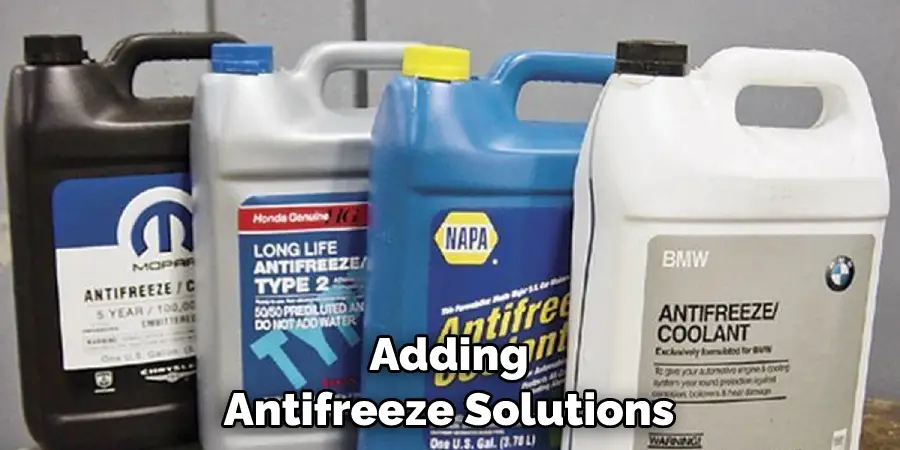
6. Wrap Pipes with Towels or Blankets
Wrapping exposed pipes with towels or blankets can also help keep them warm during cold weather conditions and prevent them from freezing over. While this method may not provide as much protection as other methods, such as insulation or heat tape, it can still help reduce heat loss and make it less likely for shallow water lines to freeze over during extreme cold temperatures.
7. Install an Electric Heater
Installing an electric heater near exposed pipes can also help keep them warm during cold weather conditions and reduce the risk of them freezing over. Electric heaters work by providing warmth directly where needed, rather than relying on air circulation like some other methods do, making them more effective at preventing frozen shallow water lines during extreme cold temperatures.
8. Keep Water Moving
Keeping water moving through shallow water lines can also help prevent them from freezing over during cold weather conditions. This method works by ensuring that any standing or stagnant water does not have time to cool down too much before being replaced with warmer water, reducing its chances of becoming frozen solid.
9. Use Hot Water Bottles
Using hot water bottles near exposed piping is another way of keeping shallow water lines from freezing during cold weather conditions. Hot water bottles work by providing direct heat near exposed piping, helping raise its temperature enough so that it does not freeze over.
This method may not provide long-term protection against frozen pipes but may still be useful in certain situations when combined with other methods, such as insulation or electric heating.

10. Set Up Windbreaks Around Exposed Piping
Setting up windbreaks around exposed piping is another way of helping keep shallow water lines from freezing during extremely cold weather conditions. Windbreaks work by blocking strong winds, which can carry much-needed warmth away from exposed piping, making it more likely for these areas to become frozen over due to lack of warmth.
Things to Consider When Keeping Shallow Water Line from Freezing
If you live in an area with a cold climate, one of the things you need to prioritize is keeping your shallow water line from freezing. A frozen water line can cause major inconvenience and damage to your pipes, so it’s important that you take preventive measures before winter sets in.
To keep your shallow water line from freezing, here are some factors to consider:
Insulation
Insulating your water line is the most effective way to prevent it from freezing. This process involves wrapping your pipes with insulating material such as foam or fiberglass. Insulation helps keep the heat in, preventing the water inside the pipes from freezing even in sub-zero temperatures.
Heat source
If you have a shallow water line that is prone to freezing, it’s important to have a heat source near the pipes. This can be a space heater or even just opening up cabinet doors in your kitchen or bathroom where the water line is located. The extra heat can make a big difference in keeping the water from freezing.
Drip faucets
Another way to keep your shallow water line from freezing is by letting your faucets drip. This keeps the water moving and prevents it from remaining stagnant, which is what causes it to freeze. It may seem counterintuitive to waste water, but a small drip can save you from dealing with frozen pipes.
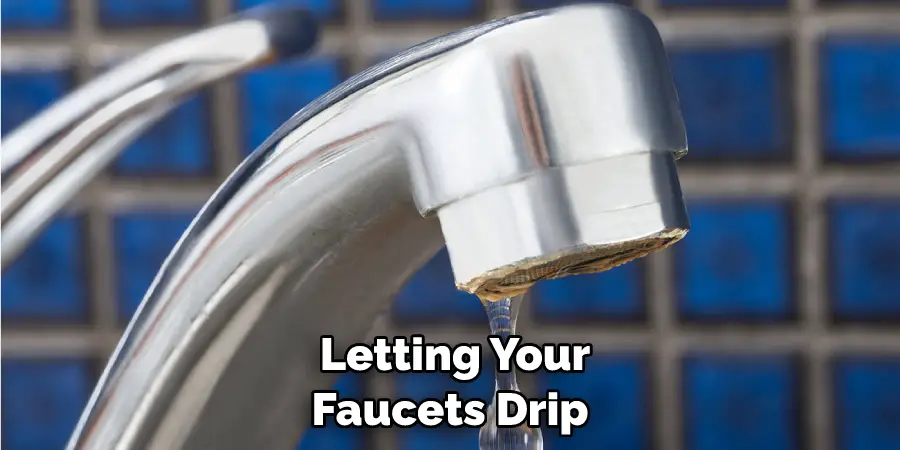
Conclusion
Taking preventative measures to keep your shallow water line from freezing is essential for the longevity of your plumbing system. By adding insulation around the pipes, keeping taps running, and allowing heat sources to warm areas near pipes you can help to keep them from freezing. Installations such as frost-free hose bibs or a forced air heater are some more proactive measures you can take for added protection.
The low cost and minimal effort required in order to protect this vital part of your home make the investment worthwhile when considering how much more costly it would be to repair a frozen pipe.
As responsible homeowners it is important to take proactive steps so that we can maintain our homes comfortably and safely – so start preparing today by following these steps on how to keep shallow water line from freezing!

